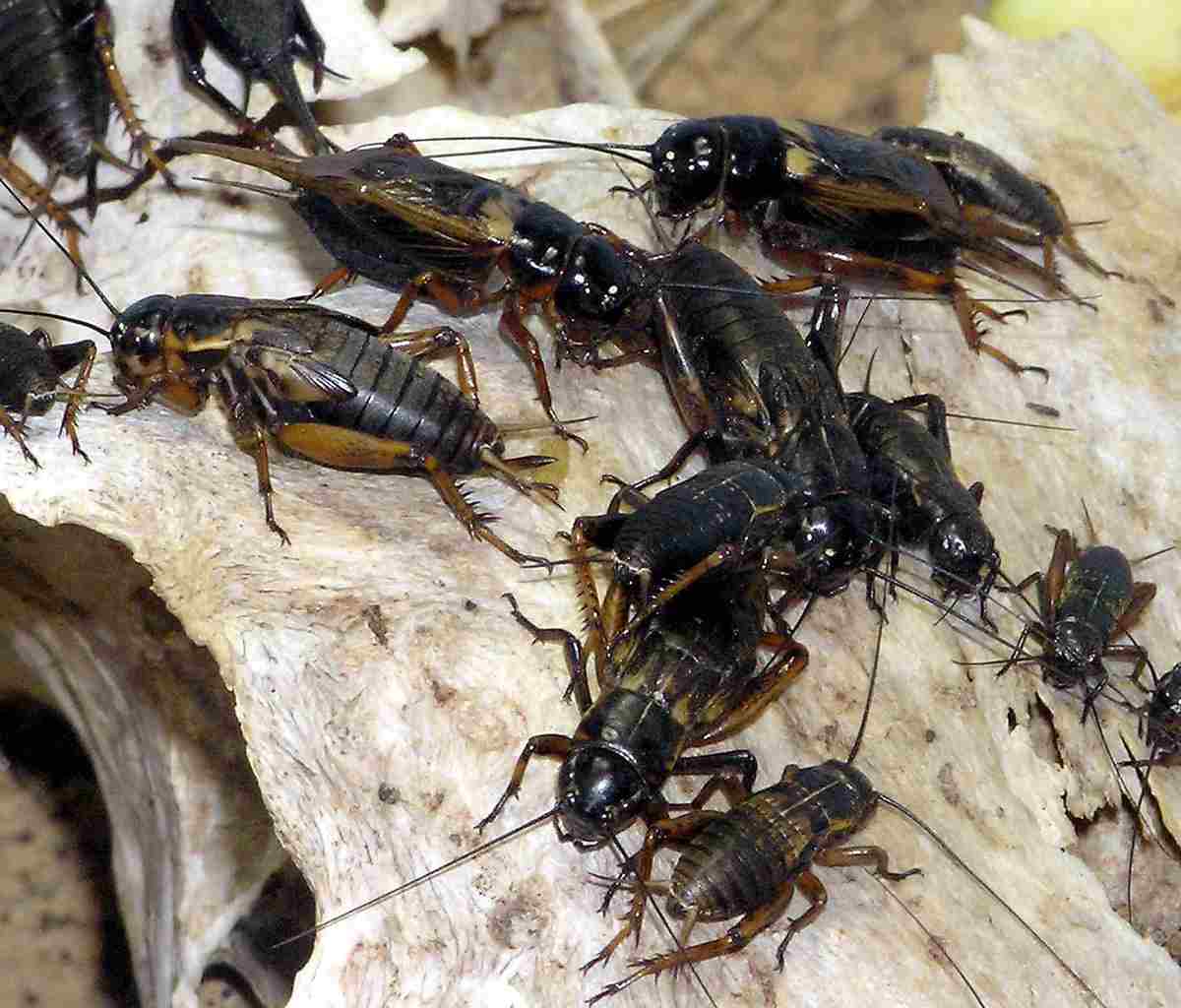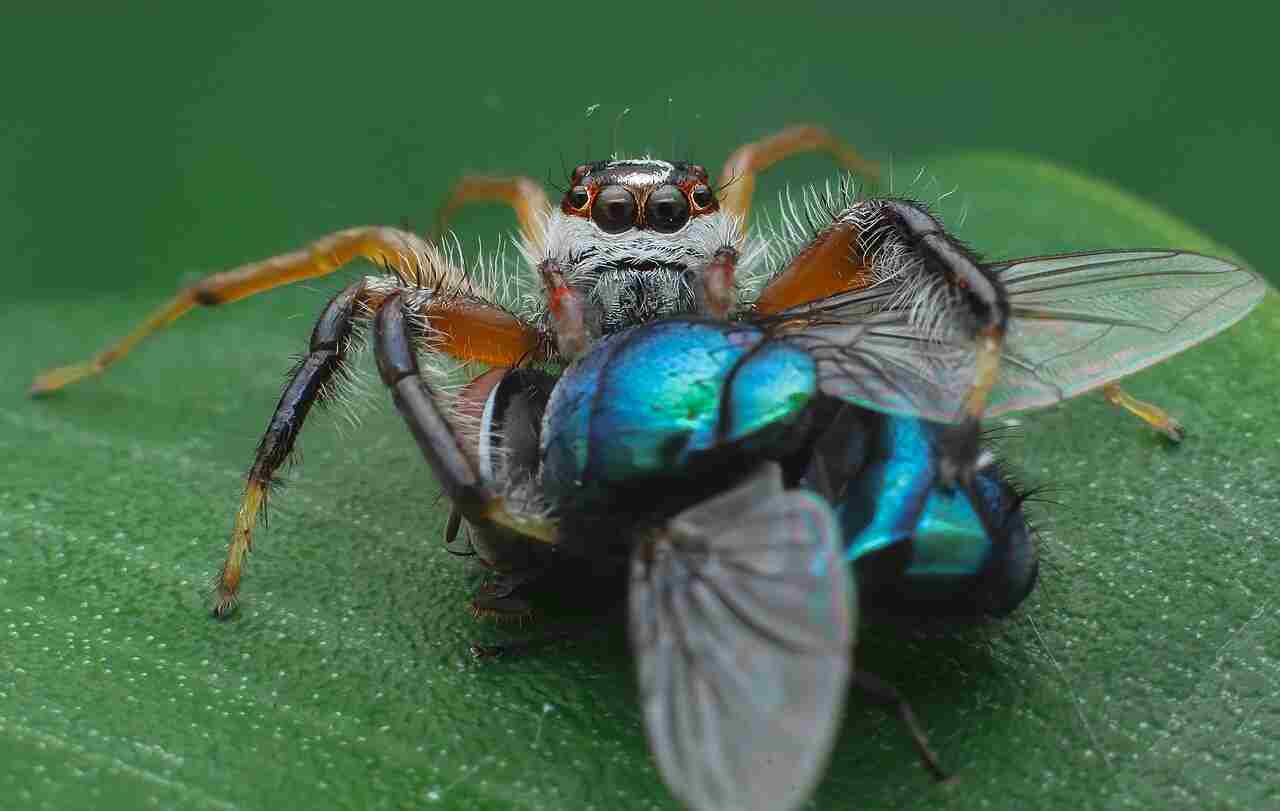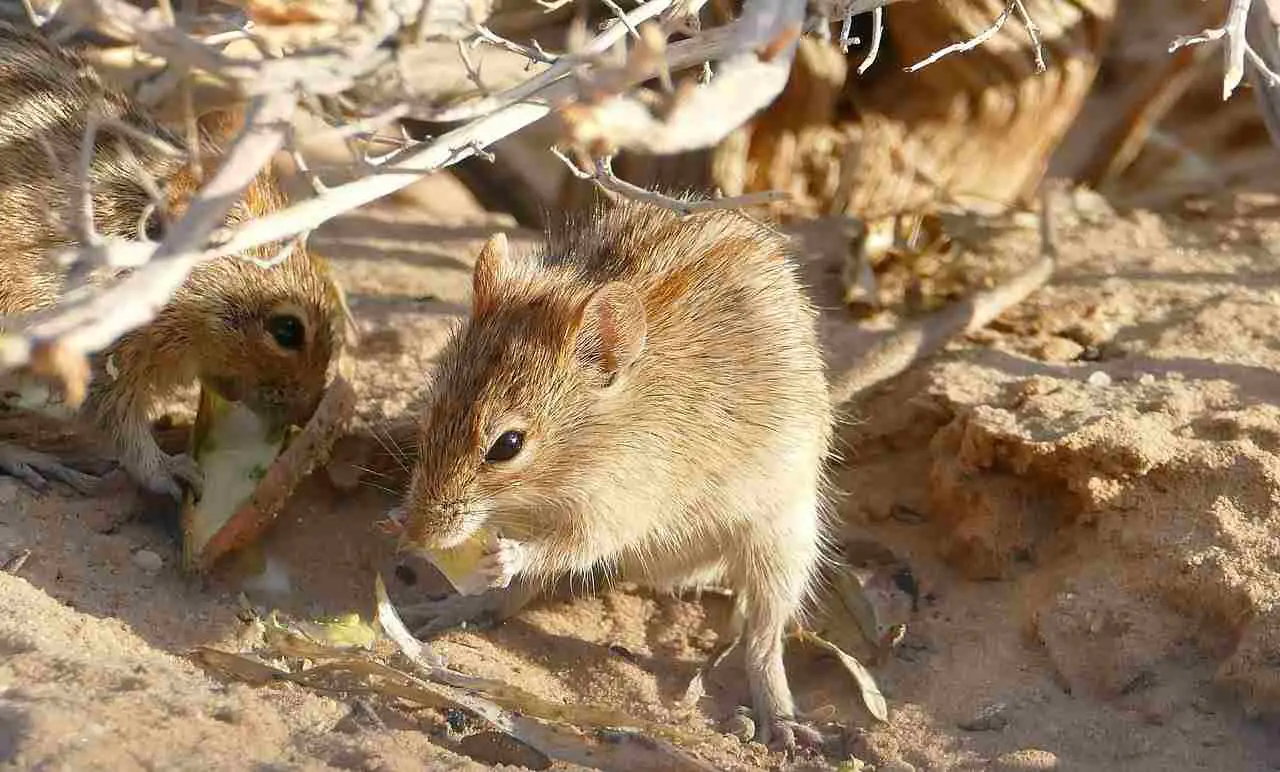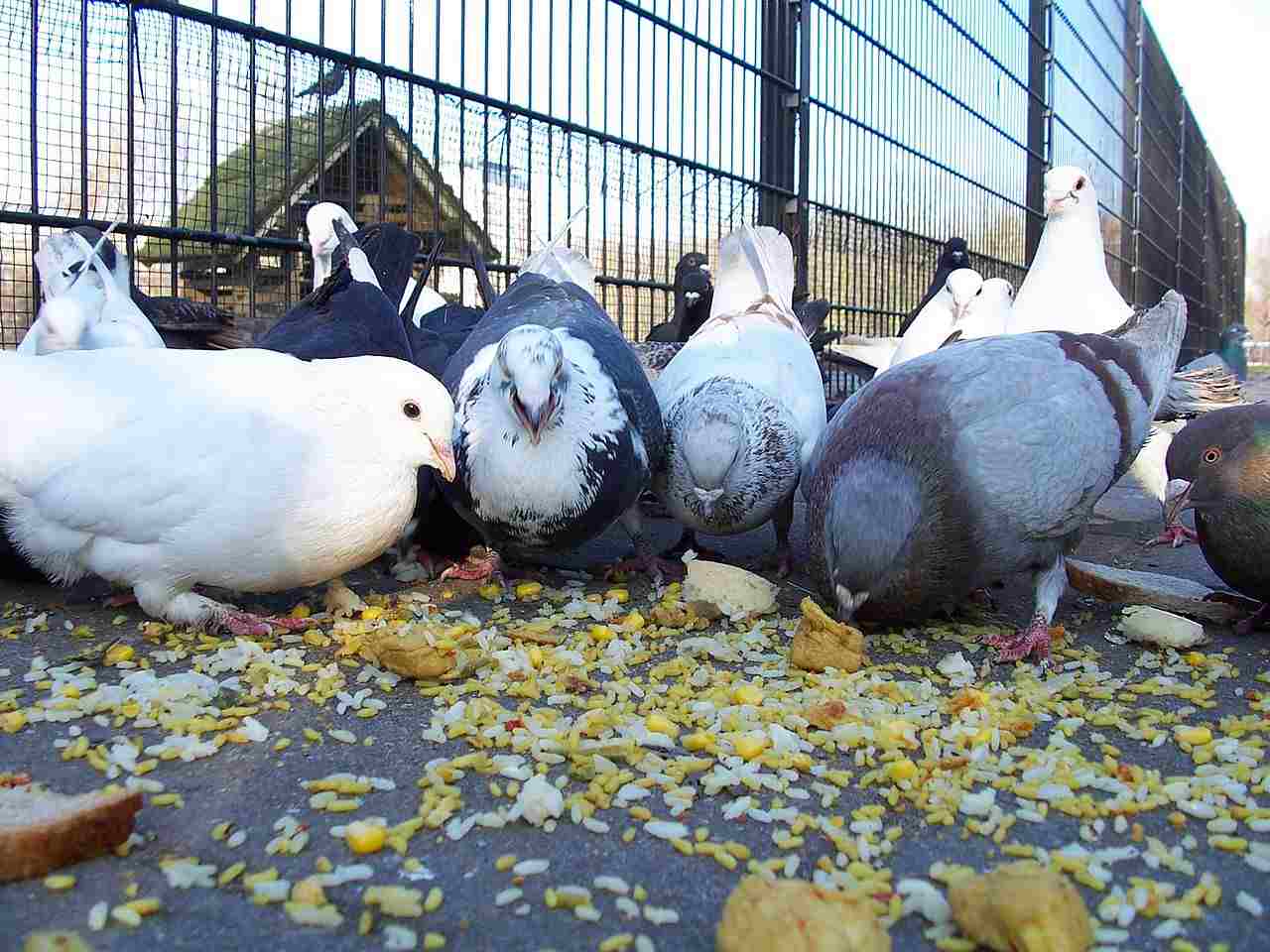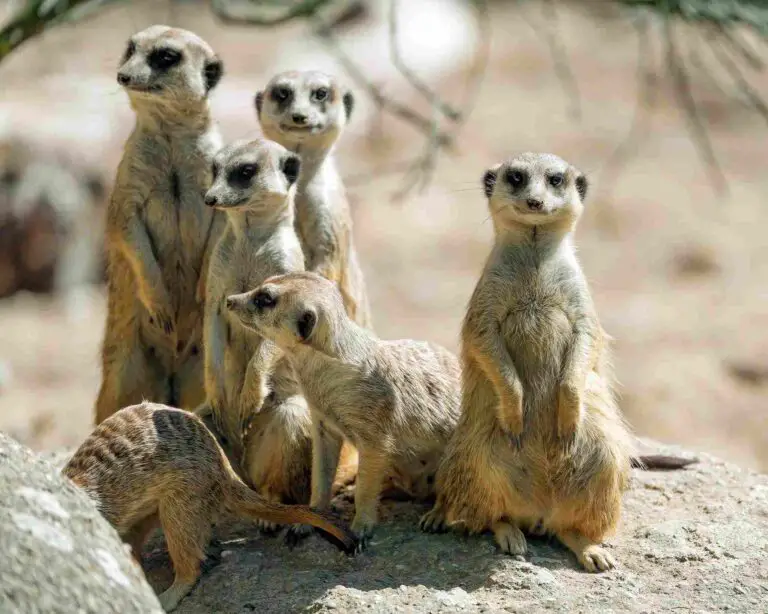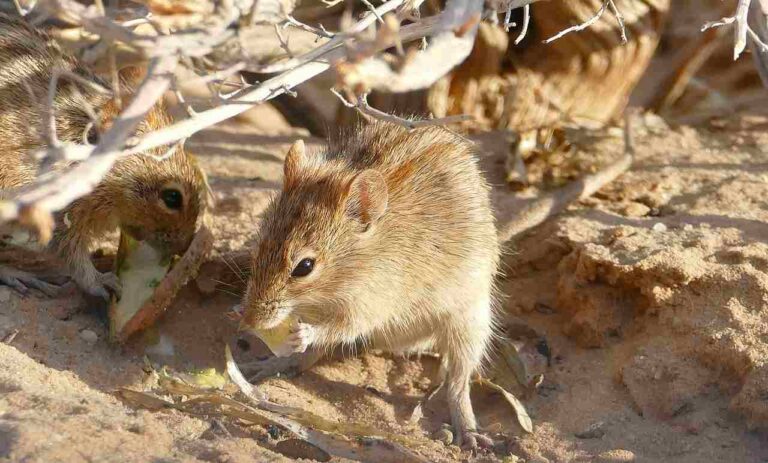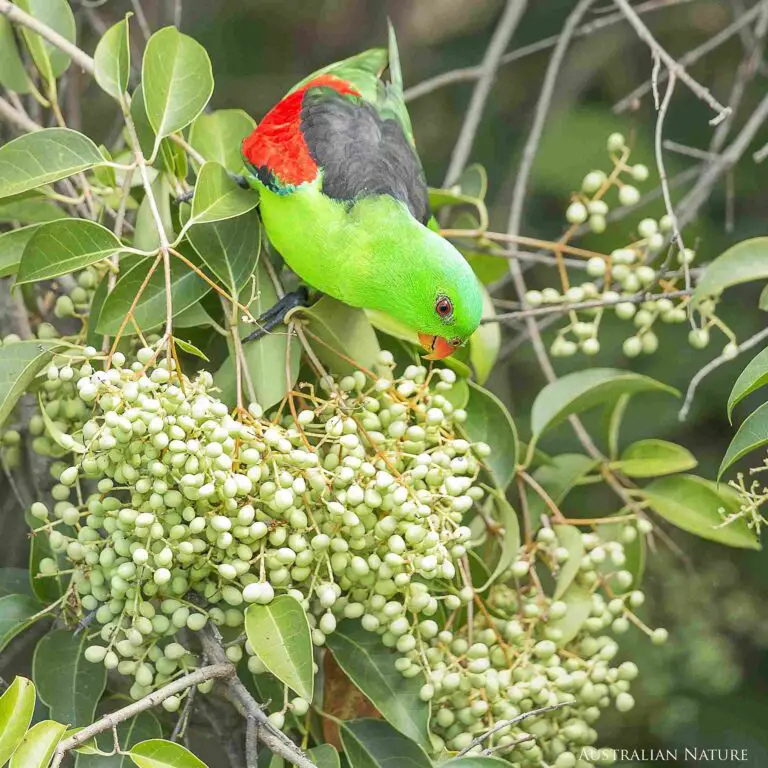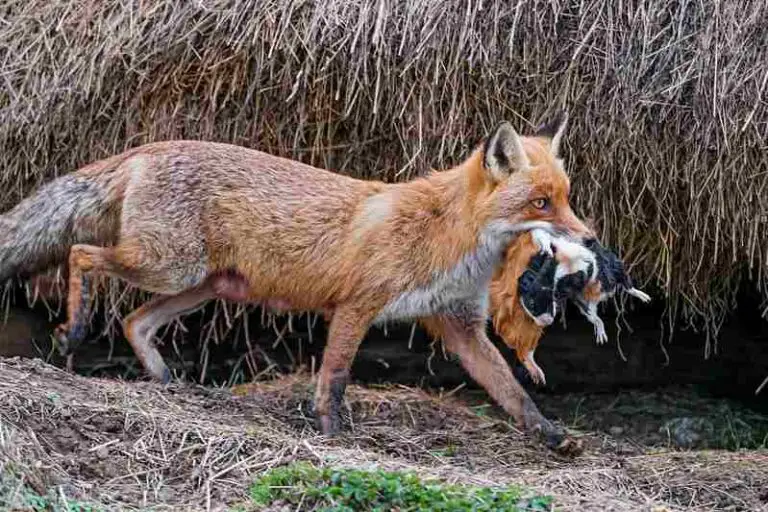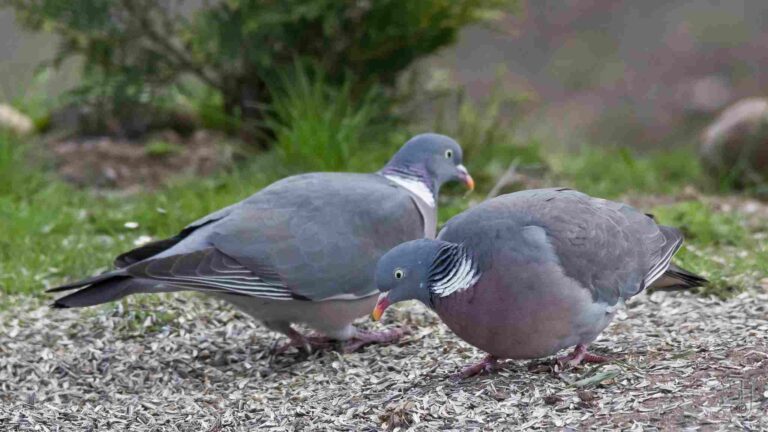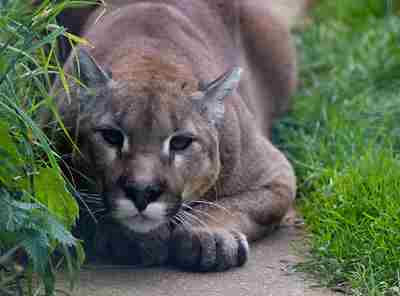What Do Froglets Eat? Exploring The Diet of Froglets
Froglets eat a variety of smaller organisms like; flies, worms, slugs, snails, crickets, grasshoppers, spiders, and mosquitoes. These and more are discussed below;
1. Flies
Froglet diet includes a variety of smaller organisms, such as flies. Flies are a common food source for froglets due to their abundance and accessibility. These small insects provide a good source of protein and nutrients for the growing froglets.
Froglets are able to consume flies because of their specialized feeding adaptations. They have a sticky tongue that they can rapidly extend to catch flying insects like flies. This allows them to quickly snatch their prey out of the air with precision and efficiency.
Flies are attracted to moist environments, which makes them a suitable food source for froglets. Froglets are typically found near bodies of water, such as ponds or streams, where flies tend to congregate. This proximity to their food source ensures that froglets have a steady supply of flies to feed on.
In addition to being a nutritious food source, flies also provide a challenge for froglets to catch. This helps to develop their hunting skills and coordination as they learn to target and capture their prey.
2. Worms
Froglets have a diverse diet that includes various organisms, and worms are one of their preferred food sources. These slimy creatures provide essential nutrients and are easily accessible for froglets in their natural habitats.
* Worms are rich in protein, making them an excellent source of nutrition for growing froglets. They contain essential amino acids that aid in the development and growth of the young frogs. Additionally, worms are relatively easy for froglets to catch and consume due to their slow movement and lack of defense mechanisms.
* Froglets are well-equipped to consume worms with their specialized feeding adaptations. They have a sticky tongue that they can extend rapidly to capture their prey. This allows them to snatch worms from the ground or vegetation with precision and efficiency.
* Worms are commonly found in moist environments, such as soil or leaf litter, which are favored habitats for froglets. These young frogs often reside near bodies of water, where worms thrive. This proximity ensures a steady supply of worms for froglets to feed on.
* Consuming worms also helps froglets develop their hunting skills and coordination. By targeting and capturing worms, froglets refine their ability to locate and catch prey, which is important for their survival in the wild.
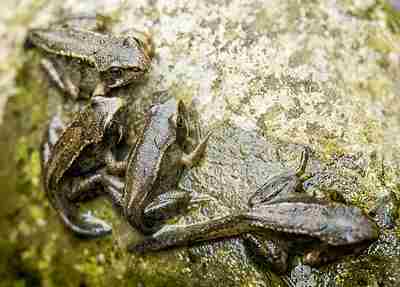
What Do Froglets Eat?: Worms in Their Humid Habitat are Suitable Prey for Froglets (Credit: David Skinner 2016 .CC BY 2.0.)
3. Slugs
Slugs are another organism that froglets can consume as part of their diet. These slimy creatures offer a nutritious food source for the growing frogs, and their accessibility makes them an attractive prey item.
* Froglets benefit from consuming slugs due to their high protein content. Protein is essential for the development and growth of young frogs, providing them with the necessary building blocks for their bodies. Slugs also contain other important nutrients that contribute to the overall health of the froglets.
* In terms of accessibility, slugs are relatively slow-moving and lack defense mechanisms, making them an easy target for froglets. The young frogs can use their sticky tongues to capture slugs with precision and efficiency, allowing them to quickly consume their prey.
* Slugs are commonly found in moist environments, such as gardens, forests, or near bodies of water. These habitats are often frequented by froglets, providing them with ample opportunities to encounter and feed on slugs. This proximity ensures a steady supply of food for the growing frogs.
4. Snails
Snails are often an important food source for froglets. These small, slow-moving mollusks provide a nutritious meal for the growing frogs.
* Froglets benefit from consuming snails due to their high protein content, which is essential for their development and growth. Protein provides the necessary building blocks for their bodies and helps them thrive. Snails also contain other important nutrients that contribute to the overall health of the froglets.
* In terms of accessibility, snails are relatively easy for froglets to catch and consume. Their slow movement and lack of defense mechanisms make them an attractive prey item. Froglets can use their sticky tongues to capture snails with precision and efficiency, ensuring a steady supply of food.
* Snails commonly occur in moist environments, such as gardens, forests, or near bodies of water. These habitats are often frequented by froglets, providing them with ample opportunities to encounter and feed on snails. The availability of snails in these areas ensures that froglets have a consistent food source to support their growth.
5. Crickets
Crickets are one of the organisms which froglets consume, They are a popular food source for froglets due to their relative abundance and nutritional value.
* Crickets are rich in protein, which is essential for the growth and development of froglets. Protein provides the necessary building blocks for their bodies and helps them build strong muscles and tissues. Additionally, crickets contain other important nutrients like vitamins and minerals that contribute to the overall health of the froglets.
* In terms of accessibility, crickets are relatively easy for froglets to catch and consume. They are agile insects that hop around, making them an attractive prey item for froglets. Froglets can use their quick reflexes and sticky tongues to capture crickets with precision and efficiency.
* Crickets can be found in various habitats, including grassy areas, gardens, and forests. These environments are often frequented by froglets, providing them with ample opportunities to encounter and feed on crickets. The availability of crickets ensures that froglets have a consistent food source to support their growth.
6. Grasshoppers
Grasshoppers can be consumed by froglets as part of their diet. These insects provide a valuable food source for froglets due to their accessibility (in many cases) and nutritional value.
* One reason why froglets eat grasshoppers is because they are rich in protein. Protein is essential for the growth and development of froglets, as it helps in building strong muscles and tissues.
Grasshoppers also contain other important nutrients like vitamins and minerals, which contribute to the overall health of the froglets.
* Despite their jumping abilities, grasshoppers are relatively easy for many froglets to catch and consume. This jumping ability often makes them an attractive prey item for froglets. With their quick reflexes and sticky tongues, froglets can capture grasshoppers with precision and efficiency.
* Grasshoppers can be found in various habitats, including grassy areas and meadows. These environments are often frequented by froglets, providing them with ample opportunities to encounter and feed on grasshoppers. The availability of grasshoppers ensures that froglets have a consistent food source to support their growth.
7. Spiders
Spiders are another organism that froglets can consume as part of their diet. Despite their creepy appearance, spiders offer a valuable food source for froglets due to their abundance and nutritional content.
* One reason why froglets eat spiders is because they are rich in protein. Protein is essential for the growth and development of froglets, providing them with the necessary building blocks for strong muscles and tissues.
Spiders also contain other important nutrients like vitamins and minerals, which contribute to the overall health of the froglets.
* In addition, spiders are often found in various habitats where froglets reside, such as grassy areas, forests, and even inside homes. This makes spiders easily accessible to froglets, increasing their chances of encountering and consuming them.
Froglets have adapted to their environment with quick reflexes and sticky tongues, which help them to capture spiders.
8. Mosquitoes
Mosquitoes are another organism that froglets can consume as part of their diet. Despite being annoying pests to humans, mosquitoes offer a valuable food source for froglets due to their abundance and nutritional content.
* For froglets, mosquitoes are rich in protein, which is essential for growth and development. Protein provides them with the necessary building blocks for strong muscles and tissues. Also, mosquitoes also contain other important nutrients like vitamins and minerals, which contribute to the overall health of the froglets.
* Mosquitoes are often found in the same habitats where froglets reside, such as wetlands, ponds, and marshes. This makes mosquitoes easily accessible to froglets, increasing their chances of encountering and consuming them. Froglets have adapted to their environment with quick reflexes and sticky tongues, which help them to capture mosquitoes in mid-air.
It is important to note that while mosquitoes are a food source for froglets, they can also harbor pathogens. However, froglets have developed immune systems that can handle certain pathogens, making them less susceptible to the negative effects of consuming mosquitoes.
Factors that Determine What Froglets Eat
Factors that determine what froglets eat include their habitat, growth conditions, level of development, availability of food sources, and species adaptations.
1. Firstly, the habitat plays a crucial role in determining what froglets eat. Different frog species inhabit various environments, such as forests, wetlands, or grasslands. Each habitat offers a unique range of food sources, including insects, small invertebrates, and even small vertebrates. Froglets adapt to their specific habitat and consume the available food sources within it.
2. Secondly, the growth conditions of froglets affect their dietary requirements. As they go through the metamorphosis process, their nutritional needs change. During this period, froglets require a diet rich in protein to support their rapid growth and development. Insects like flies, worms, and crickets provide the necessary protein for their muscle and tissue development.
3. The level of development also plays a role in determining what froglets eat. Younger froglets may have a more limited diet, primarily consisting of smaller insects and invertebrates. As they grow and mature, their diet expands to include larger prey items, such as slugs, snails, and grasshoppers.
4. Furthermore, the availability of food sources in their environment influences what froglets eat. If their habitat lacks certain prey items, froglets will adapt and consume what is readily available. This adaptability ensures their survival even in challenging conditions.
5. Lastly, each frog species has specific adaptations that influence their diet. Some species have specialized tongues or sticky pads on their feet, allowing them to catch and consume specific types of prey. These adaptations determine the range of food sources that froglets can effectively consume.
1. Habitat
Habitat is an important factor that determines what froglets eat. Different frog species inhabit various environments, such as forests, wetlands, or grasslands. Each habitat offers a unique range of food sources, including insects, small invertebrates, and even small vertebrates. Froglets adapt to their specific habitat and consume the available food sources within it.
* For example, in a forest habitat, froglets may have access to a wide variety of insects like flies, worms, and crickets. These insects provide the necessary protein for their muscle and tissue development.
In wetland habitats, froglets may have a diverse diet that includes slugs, snails, and mosquitoes. The availability of water in wetlands allows for the presence of these food sources.
* Grassland habitats may provide froglets with an abundance of grasshoppers and spiders. These prey items are readily available in open areas with tall grasses. Froglets in grassland habitats have adapted to catch and consume these specific types of prey.
2. Growth Conditions
Growth conditions play a role in determining the diet of froglets. As froglets develop and grow, their nutritional needs change, and they require specific types of food to support their growth.
* One important factor in growth conditions is the availability of prey that matches the size and developmental stage of the froglet.
For example, smaller froglets may primarily feed on tiny insects like flies and mosquitoes, while larger froglets can consume larger prey such as worms and crickets. This ensures that the froglets receive the appropriate amount of nutrients for their size and development.
* Another factor is the temperature and climate conditions in which the froglets are growing. Warmer climates may result in a higher abundance of certain prey, such as grasshoppers and spiders, which thrive in these conditions. In contrast, colder climates may limit the availability of certain prey, leading froglets to rely on alternative food sources.
* The overall health and well-being of the froglets also influence their growth conditions and, consequently, their diet. Froglets that are in good health and have access to a diverse range of food sources are more likely to thrive and consume a balanced diet.
* Growth conditions, including the size and developmental stage of the froglets, the temperature and climate, and their overall health, all contribute to determining what froglets eat.
3. Level of Development
The level of development is a factor that determines what froglets eat. As froglets progress through their growth stages, their dietary needs evolve accordingly.
* At the early stages of development, when froglets are small and just starting to transition from tadpoles, their diet primarily consists of tiny insects like flies and mosquitoes. These small prey items are suitable for their size and provide the necessary nutrients for their growth.
* As froglets continue to develop and grow, their diet expands to include larger prey. Worms and crickets become more common food sources for larger froglets. These prey items offer a higher nutritional value and help sustain the froglets’ increasing energy requirements.
* The level of development also influences the types of prey that froglets can capture and consume. Smaller froglets may not have the physical capabilities to catch larger prey like grasshoppers or spiders. However, as they grow and develop, their hunting skills improve, allowing them to target and consume a wider range of prey.
* Additionally, their degree of development affects the froglets’ ability to digest certain types of food. As froglets’ digestive systems mature, they become better equipped to process and extract nutrients from different prey items.
4. Availability of Food Sources
The availability of food sources also determines what froglets eat. As they transition from tadpoles to froglets, their dietary options expand, but they are still limited by the food sources in their environment.
* Froglets rely on a variety of prey items to meet their nutritional needs. Flies and mosquitoes are commonly consumed by froglets, especially in the early stages of development. These small insects are abundant and easily accessible, providing a convenient food source for growing froglets.
* However, as froglets grow and develop, they require larger prey to sustain their energy requirements. Worms and crickets become important food sources for larger froglets. These prey items offer a higher nutritional value and are often found in the same habitats as froglets, making them readily available.
* The availability of food sources also depends on the specific habitat where froglets reside. Different habitats support different types of prey, which in turn influence the diet of froglets. For example, froglets living near water bodies may have access to aquatic insects like water beetles and dragonfly larvae.
* In addition to habitat, the season and weather conditions can affect the availability of food sources for froglets. During rainy seasons, there may be an abundance of insects, while dry periods may limit the availability of prey.
5. Species and Adaptations
Species and adaptations are instrumental in determining the diet of froglets. Different species of froglets have specific dietary preferences and adaptations that allow them to thrive in their respective environments.
* One key factor is the size and morphology of the froglet’s mouth. The size of their mouth determines the size of prey they can consume.
For example, froglets with larger mouths are capable of consuming larger prey items such as grasshoppers and spiders. On the other hand, froglets with smaller mouths are limited to smaller prey like flies and mosquitoes.
* Another important adaptation is the ability to catch prey. Some froglet species have specialized adaptations that enable them to catch specific types of prey.
* For instance, certain species have long, sticky tongues that they use to capture flying insects like flies and mosquitoes. Other species have strong jaws and well-developed teeth that allow them to catch and consume larger prey like crickets and grasshoppers.
The habitat in which froglets reside influences their diet in collaboration with their species. Different habitats support different prey populations, and froglets have adapted to take advantage of the available food sources. For example, froglets living in forested areas may have a diet that includes slugs and snails, which are abundant in such environments.
How Often Do Froglets Eat?
The frequency of feeding for froglets depends on their age and stage of development.
* Young froglets, who are still growing and developing, typically need to be fed as often as once every 24 to 48 hours. This regular feeding schedule ensures that they receive the necessary nutrients to support their growth.
* As froglets mature into fully grown adults, their feeding frequency may decrease. Adult frogs can be fed twice or thrice a week, as their metabolic rate slows down and they require less food to sustain themselves.
This reduced feeding schedule is also influenced by the fact that adult frogs have larger stomachs and can consume larger prey items in a single feeding.
* It is important to note that the feeding frequency may vary slightly depending on the species of froglet. Some species may have different dietary requirements or metabolic rates, which can affect how often they need to eat.
Additionally, environmental factors such as temperature and availability of food sources can also impact the feeding frequency of froglets.
Do Frogs Eat Ants?
Yes, frogs do eat ants, although they may not always have easy access to them due to their semiaquatic habits. Ants are a common food source for many frog species, especially those that live in terrestrial or semi-terrestrial habitats.
* Ants provide a good source of protein for frogs and can be an important part of their diet. Some frog species have even developed specialized adaptations to help them catch and consume ants. For example, certain frogs have long, sticky tongues that they use to quickly snatch up ants and other small insects.
* However, it is important to note that not all frog species typically consume ants. Some frogs have different dietary preferences and may primarily feed on other types of insects or invertebrates.
The specific diet of a frog can depend on factors such as its habitat, growth conditions, level of development, and availability of food sources.
What Do Frogs Eat Besides Insects?
Besides insects, frogs eat other invertebrates like worms, slugs, snails, small crustaceans. Some large species like bullfrogs eat other frogs, newts, reptiles and mammals.
* Frogs have a diverse diet that extends beyond just insects. While insects are a primary food source for many frog species, they also consume other invertebrates and even larger prey.
* One common type of invertebrate that frogs eat besides insects is worms. Worms provide a good source of protein and are often found in moist environments, making them easily accessible for frogs.
* Slugs and snails are also on the menu for frogs. These slimy creatures are slow-moving and make for an easy meal for frogs.
* In addition to these smaller invertebrates, some frog species have a more carnivorous appetite. Large species like bullfrogs have been known to eat other frogs, newts, reptiles, and even small mammals. These larger prey items provide a substantial amount of nutrition for the frogs.
* It must be noted that the specific diet of a frog can vary depending on factors such as its habitat, growth conditions, and availability of food sources. Some frogs may have a more specialized diet based on their adaptations and the specific ecosystem they inhabit.
Do Frogs Eat Fruit?
Because frogs are primarily carnivorous and insectivorous in adulthood, it is highly unlikely for them to eat fruit or other plant matter. Their diet mainly consists of small invertebrates like insects, worms, slugs, and snails.
However, during their larval stage as tadpoles, frogs do consume fruits and other plant materials.
* As tadpoles, frogs have a more diverse diet that includes algae, aquatic plants, and decaying organic matter. They use their specialized mouthparts to scrape and filter these plant materials from the water.
This plant-based diet provides the necessary nutrients for their growth and development during this stage.
* Once frogs undergo metamorphosis and transition into adulthood, their digestive system undergoes significant changes.
Their mouthparts and digestive enzymes become more adapted to capturing and digesting small prey like insects. This shift in diet is necessary for their survival and to meet their nutritional requirements.
* It is noteworthy that while some frog species may occasionally consume small fruits or berries if they come across them, this behavior is not common or significant enough to consider frogs as fruit-eating animals. Their diet primarily consists of animal-based food sources.
Do Frogs Eat Grass?
Frogs eat grass and other plant-derived biomass in their larval stage.
*Adult frogs are primarily carnivorous and insectivorous, and therefore unlikely to eat grass. Rather, frogs have specialized mouthparts and digestive enzymes that are adapted to capturing and digesting small prey like insects.
This shift in diet is necessary for their survival and to meet their nutritional requirements.
* However, during their larval stage as tadpoles, frogs do consume plant matter, including grass and other monocots. Tadpoles have a more diverse diet that includes algae, aquatic plants, and decaying organic matter.
They use their specialized mouthparts to scrape and filter these plant materials from the water. This plant-based diet provides the necessary nutrients for their growth and development during this stage.
* While some adult frog species may occasionally come across grass and consume it, this behavior is mostly opportunistic, and not common or significant enough to consider frogs as grass-eating animals. Grass does not provide the necessary nutrients and energy that frogs require in adulthood. Therefore, frogs primarily rely on animal-based food sources to meet their dietary needs.
What Do Frogs Need to Survive?
What frogs need to survive include; humid environmental conditions, water source(s) for thermoregulation and reproduction, shelter in the form of soil, rocks or vegetation, moderate light, minimal ventilation, and food sources.
1. To survive, frogs require several biotic and abiotic elements in their environment. Firstly, they need a humid environment to maintain dermal moistness, which is essential for their skin’s health and function. This is because frogs breathe through their skin, and a dry environment can lead to dehydration and respiratory problems.
2. Secondly, frogs need access to a water source for thermoregulation and reproduction. Water helps frogs regulate their body temperature, as they can absorb heat from the water or cool down by submerging themselves. In addition, water is crucial for frogs to lay their eggs and for tadpoles to develop into froglets.

What Do Frogs Need to Survive?: Humid Conditions and Water Source(s) are Among the Main Requirements of Frogs (Credit: Juybari 2015 .CC BY-SA 3.0 Deed.)
3. Thirdly, frogs need shelter in the form of vegetation, soil, or rocks. These provide hiding places and protection from predators. Frogs often seek refuge in dense vegetation or burrow into the soil or rocks to stay safe.
4. Fourthly, frogs require moderate light for diurnal activity. While some frog species are nocturnal, many are active during the day and rely on light to find food and navigate their surroundings.
5. Fifthly, frogs need minimal ventilation to avoid desiccation. Their permeable skin makes them susceptible to drying out, so they require environments with adequate humidity and limited exposure to dry air.
6. Lastly, frogs rely on a variety of food sources to survive. These include insects, worms, mollusks, and crustaceans. These food sources provide the necessary nutrients for their growth, energy, and overall health.

